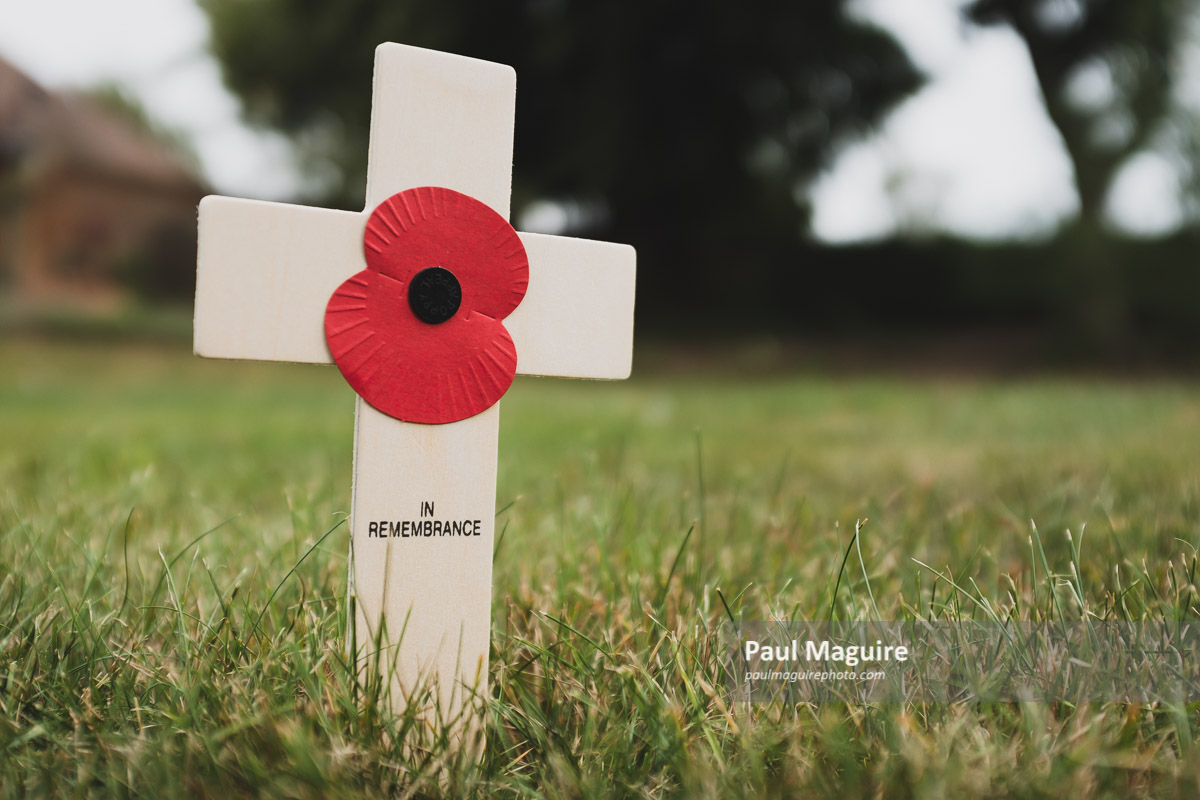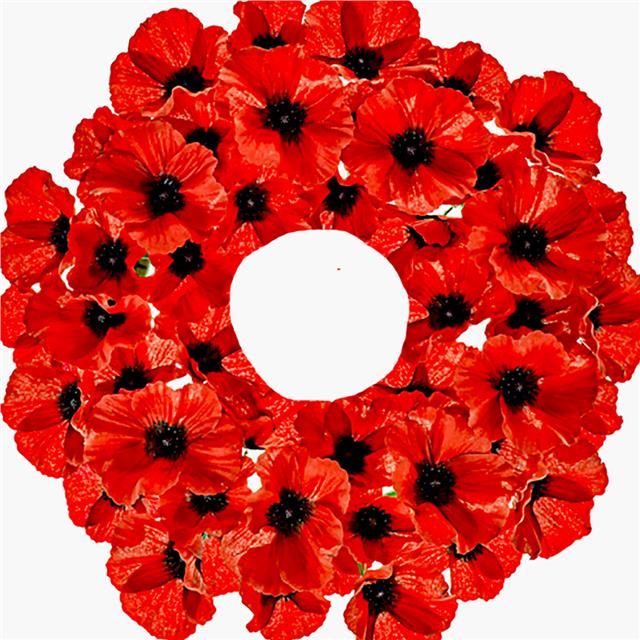

Poppies adorn the panels of the Memorial's Roll of Honour, placed beside names as a small personal tribute to the memory of a particular person, or to any of the thousands of individuals commemorated there. A senior Australian officer also a laid a wreath of poppies picked from the slopes of Mt Scopus. At the Dawn Service in 1940 each soldier dropped a poppy as he filed past the Stone of Remembrance. An early instance took place in Palestine, where poppies grow abundantly in the spring. The poppy has also become very popular in wreaths used on Anzac Day. Today the RSL continues to sell poppies for Remembrance Day to raise funds for its welfare work. Each poppy was sold for a shilling: five pence was donated to a charity for French children, six pence went to the League's own welfare work, and one penny went to the League's national coffers. For this drive, the league imported one million silk poppies, made in French orphanages. The Australian Returned Soldiers and Sailors Imperial League (the forerunner to the RSL) first sold poppies for Armistice Day in 1921. The poppy soon became widely accepted throughout the allied nations as the flower of remembrance to be worn on Armistice Day. Anna Guérin, the French YMCA secretary, took the idea further by selling poppies to raise money for widows, orphans, and needy veterans and their families. At a meeting of YMCA secretaries from other countries, held in November 1918, she talked about the poem and her poppies. She was so moved by it that she wrote a poem in reply and decided to wear a red poppy always as a way of keeping faith, as McCrae had urged in his poem. Moina Michael, who worked for the American YMCA, read McCrae's poem just before the Armistice. In English literature of the nineteenth century, poppies had symbolised sleep or a state of oblivion in the literature of the First World War a new, more powerful symbolism was attached to the poppy – the sacrifice of shed blood. The sight of poppies on the battlefield at Ypres in 1915 moved Lieutenant Colonel John McCrae to write the poem In Flanders fields (see The recitation). In soldiers' folklore, the vivid red of the poppy came from the blood of their comrades soaking the ground. During the First World War, red poppies were among the first plants to spring up in the devastated battlefields of northern France and Belgium. Mary Cassatt, Red poppies, 1874-1880, Philadelphia Museum of Art, Philadelphia, PA, USA.The Flanders poppy has long been a part of Remembrance Day, the ritual that marks the Armistice of 11 November 1918, and is also increasingly being used as part of Anzac Day observances. First conceived by the Co-operative Women’s Guild in 1933, white poppies, with the added meaning of hope for the end of all wars, were frequently worn by the widows and children of dead soldiers. Pacifists and faith organizations advocated for the use of white poppy instead, which would stand for casualties of all wars.

WikiArt.Ī controversy arose around the red poppy which, according to some, has become a symbol for British isolationism since the red poppy remembered only soldiers of the British Commonwealth. A White Poppy Alternative Claude Monet, White Poppy, 1883, private collection. Vincent van Gogh, Field with Poppies, 1890, Gemeentemuseum, The Hague, Netherlands. In the UK, poppies were worn for the first time in 1921 during the official anniversary services. The custom of wearing a red poppy originated in the United States when a university professor from the University of Georgia, Moina Micheal, swore to wear a red poppy after she had read a poem by Canadian physician Lieutenant-Colonel John McCrae called “ In Flanders Fields”. A Poppy Poem Vincent van Gogh, Red Poppies and Daisies, 1890, Albright-Knox Art Gallery, Buffalo, NY, USA. Although red poppies had grown there before the war, the blooming flowers quickly became a new, peaceful symbol for all the blood spilled in the war. The summer after the hostilities ended, many fields in Flanders, which in World War I had become sites of the war’s most atrocious battles, turned bright red. 1832, Victoria and Albert Museum, London, UK. We’re joining in the observance of this day by presenting you with the most beautiful paintings of poppies: Why Poppies? John Constable, Study of poppies, ca. In the UK it is known as Poppy Day and for the entire month of November, many people wear a simple poppy pinned to the lapels of their coats as a sign of remembrance and respect for veterans. It was inaugurated by King George V in 1919 on 11th November, the first anniversary of the date of signing the 1918 armistice. Remembrance Day is a memorial remembering all the soldiers who died in the First World War.


 0 kommentar(er)
0 kommentar(er)
